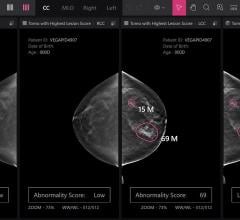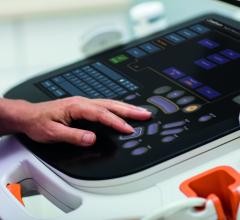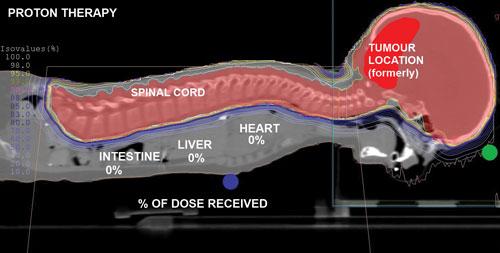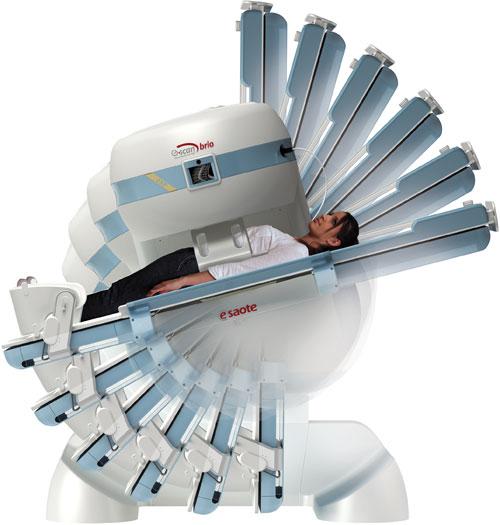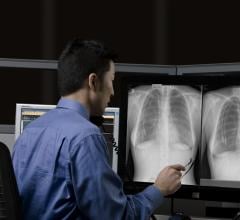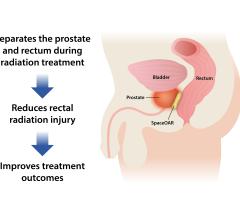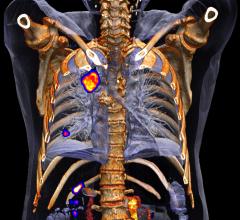Researchers at University of California San Diego School of Medicine conducted a prospective study to assess the efficacy of two-dimensional magnetic resonance elastography (MRE) and a novel 3-D version in detecting advanced liver fibrosis from nonalcoholic fatty liver disease (NAFLD).
It has been said, with melancholy, by the old that youth is wasted on the young. But it is just as bad, if not worse, when wisdom is wasted on the old. Radiology exemplifies the former but, fortunately, not the latter.
Annual breast cancer screening is a chapter many women are hesitant to add to their personal medical history books. Undergoing frequent mammograms and other imaging exams means growing that mid-life medical history, often in a complicated way. In breast health, access to prior exams is critical in determining if and how the images have changed. Radiologists and other specialists — typically at separate locations — require access to a detailed patient history in providing optimal, safe care. Patients, too, must be proactive about their own screening and care decisions, especially considering risks of radiation dose and other clinical treatments.
Radiology departments have many different needs and face a wide variety of challenges that can impact their departments ...
Born out of the Health Information Technology for Economic and Clinical Health (HITECH) Act of 2009, the Meaningful Use (MU) program was intended to increase adoption of electronic medical records (EMR) and other information technology to improve delivery of care while lowering costs. As healthcare providers have attempted to work through the various stages to earn reimbursement incentives — or avoid penalties — many have been left frustrated and confused by objectives that do not seem to apply to their practice. Nowhere has this been more true than in radiology.
Clinical decision support (CDS) software has been discussed for years as a way to help clinicians follow best practice guidelines and to help eliminate unnecessary tests or procedures. However, implementing these systems has been slow, partly due to their cost and complexity, and partly due to pushback from physicians. But a new chapter is about to open for CDS as healthcare reform will soon require implementation of these systems.
Medical-grade display technology has evolved significantly and swiftly, and many new applications are available that help to streamline workflow and enhance productivity.
Despite decades of progress in breast imaging, one challenge continues to test even the most skilled radiologists ...
April 5, 2016 — The Focused Ultrasound Foundation has produced a video that demonstrates the potential of this new ...
IBA (Ion Beam Applications SA) has recently received CE mark authorization of its new supra conducting accelerator.
North Fulton Hospital, Roswell, Ga., is one of the first healthcare providers in the United States to purchase the new Carestream Touch Prime XE Ultrasound System.
Bayer Radiology’s Barbara Ruhland and Thom Kinst discuss how radiology departments can address the many different ...
New research shows individuals with a greater degree of activity in the stress center of the brain also have more evidence of inflammation in their arteries and were at higher risk for cardiovascular events, including heart attack, stroke and death.
As proton therapy becomes more widely available, imaging for the development of proton treatment plans will become more commonplace. However, there are major differences in how treatment is planned for proton therapy compared to traditional radiation therapy. While anatomical imaging is the main focus in radiation therapy, proton therapy requires highly calibrated computed tomography (CT) datasets that are used to directly compute a highly technical treatment plan.
Introduced in the 1980s, magnetic resonance imaging (MRI) has become an integral part of any radiology department. The modality has most often been used for brain and spine scans, but new applications are expanding its capabilities in recent years. Vendors are also working to reduce both scan times and machine size for enhanced productivity.
eHealth Saskatchewan plays a vital role in providing IT services to patients, health care providers, and partners such ...
Now more than ever, thanks to healthcare reform, hospitals and clinics are having to find innovative ways to be flexible with their imaging systems.
Novel technology developed by HeartFlow Inc. significantly reduces the need for invasive procedures to diagnose patients suspected of having coronary artery disease.
The need to repeat even one scan can put you behind schedule, increasing patient wait times and staff overtime.
The ITN team has just returned from the Healthcare Information and Management Systems Society’s (HIMSS16) annual conference in Las Vegas, where more than 40,000 healthcare IT professionals gathered to learn about and share information on optimizing healthcare outcomes using information technology.
Pyrexar Medical announced a new distribution partnership with Clinitech Co. Ltd., bringing Pyrexar’s hyperthermia technologies into Cuba, the West Indies, Panama and Venezuela.
April 1, 2016 — Augmenix Inc. announced the publication of the SpaceOAR System U.S. Clinical Trial results of the ...
April 1, 2016 — Pyrexar Medical announced the achievement of ISO 13485 Certification and CE re-certification for its ...
In a paper published in Nature Reviews last week, Axel Hoos, M.D., Ph.D., laid out the current immunotherapy development paradigm, as well as his strategic vision to optimize the implementation of next-generation immunotherapies.

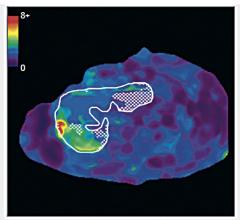
 April 06, 2016
April 06, 2016 





